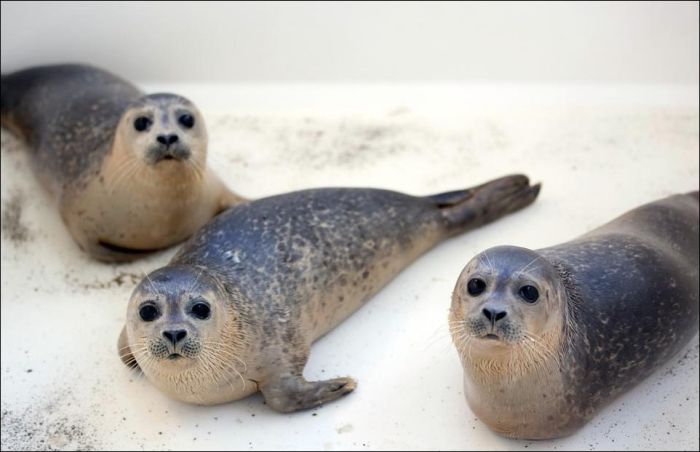|
|
Baby Seals Rescued By People, Denmark
|
Recent molecular evidence suggests that pinnipeds evolved from a bearlike ancestor about 23 million years ago during the late Oligocene or early Miocene epochs, a transitional period between the warmer Paleogene and cooler Neogene period. The earliest fossil Pinniped that has been found is Puijila darwini, of about 23 million years ago. Pujilla had heavy limbs, indicative of upright movement on land, and flattened phalanges, indicating that they were probably webbed, but not yet flippers. The discovery of Pujilla in northern Canada strongly suggests that pinnipeds originated in the Arctic. The reference to Charles Darwin is in honor of his contention made in On the Origin of Species (1859) that
A strictly terrestrial animal, by occasionally hunting for food in shallow water, then in streams or lakes, might at last be converted in an animal so thoroughly aquatic as to brace the open ocean
The otter-like mustelid Potamotherium may actually represent an even earlier phase in the evolution of pinnipeds.
Another (more advanced) early pinniped is Enaliarctos, which lived 24 – 22 million years ago. It is believed to have been a good swimmer, but to have been able to move on land as well as in water, more like an otter than like modern pinnipeds. There has been longstanding debate as to whether walruses diverged from a common otariid-phocid ancestor, or whether the phocids diverged before a common otariid-odobenid ancestor. The most recent evidence suggest that the latter hypothesis is more likely.
|
|









